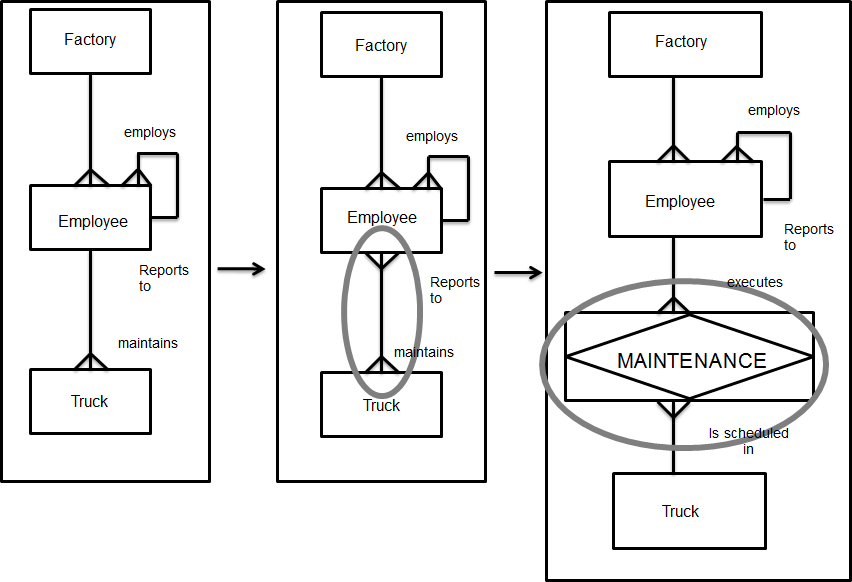| | Entity Relationship ModelingEntity Relationship Modeling gives an insight to the LN application
databases and the way in which they are interrelated. Entity Relationship Modeling is composed of two main building
blocks: - Entity types
- Entity relationships
These building blocks are interrelated and used in entity
relationship diagrams to show the relationships between the permanent storage
components. Together with the other components listed later, they let you
illustrate the diversity of relationships between the different databases. A
group of related diagrams make up an entity relationship model. Entity type A person, place, thing, or concept that you want to record
information about. An entity type is a group of entities with common attributes
and can be part of a diagram, such as Trucks. Entity A single occurrence of an entity type; a fact relevant to the
company, and about which information is permanently stored. For example: Truck-A and Truck-B.
Three kinds of entities exist: Logical entity Entities that have a meaning to the real world and are
comprised of one or more physical entities; they are defined on a higher
abstraction level. Physical entity Database tables of the LN application. Associative entity An entity used to link other entities. An associative entity
type is only used when there is a many-to-many relationship between two entity
types.
Example There could be an M:N relationship between EMPLOYEE and TRUCK regarding maintenance. This relationship does not show which EMPLOYEE maintains which TRUCK. There are also other attributes to be considered, such as time
spent, part no. and so on. As a result of the ambiguity regarding the Many-to-many
relationship, the associative entity type MAINTENANCE can be defined. (See this diagram). Attribute A fact or non-decomposable piece of information describing
an entity type; for example, Number of wheels. Attribute value The value of an attribute; for example, 4 wheels. Relationship A reason of relevance for associating entities of one or two
entity types. Cardinality A specification of the number of possible entities for each
entity type of a pairing.
The three types of cardinality are: One-to-One (1:1) A one-to-one relationship. Only one instance of entity type
B can be associated with only one instance of entity type A. One-to-Many (1:N) A one-to-many relationship. Multiple instances of entity
type B can be associated with only one instance of entity type A. Many-to-Many (M:N) A many-to-many relationship. Multiple instances of entity
type B can be associated with multiple instances of entity type A and
vice-versa.
Within Entity Relationship Modeling, there is no real
difference between logical and physical entities. | |
